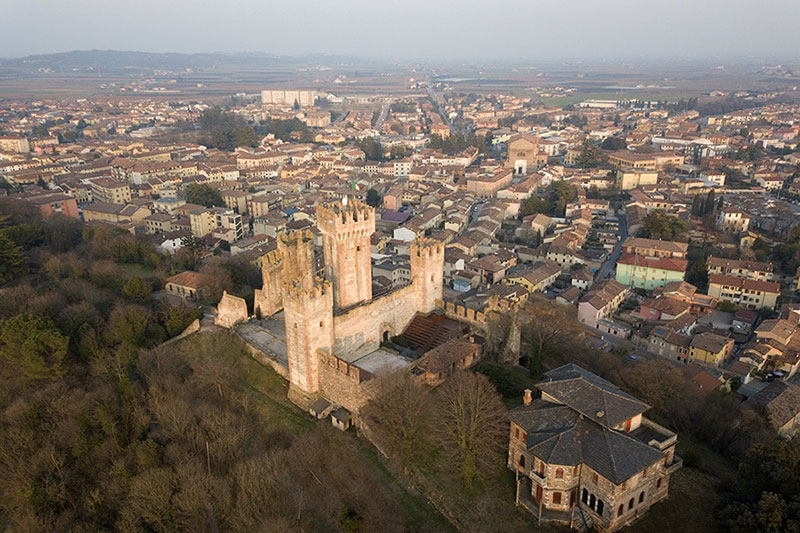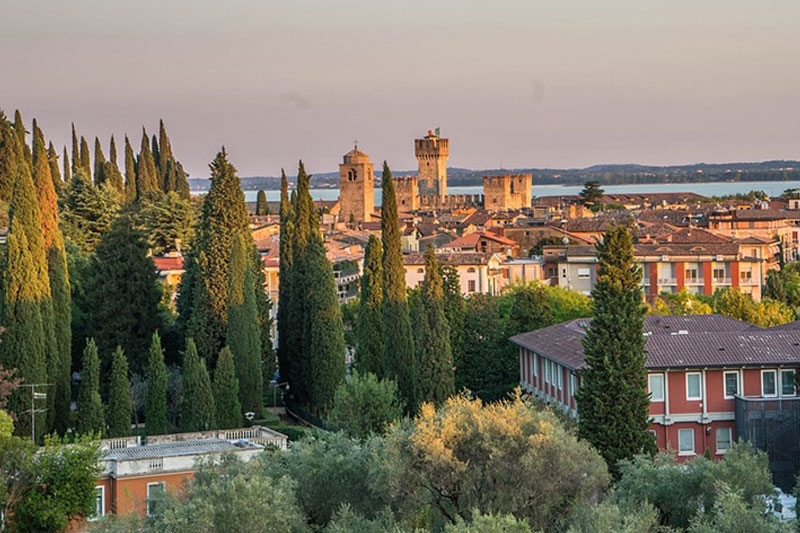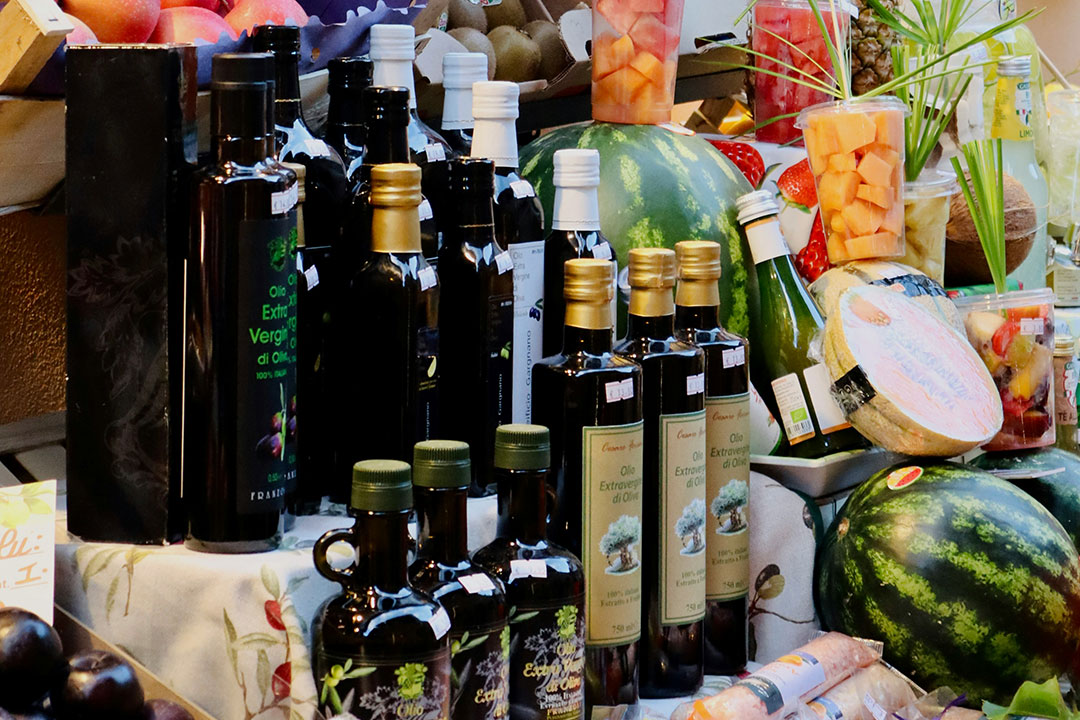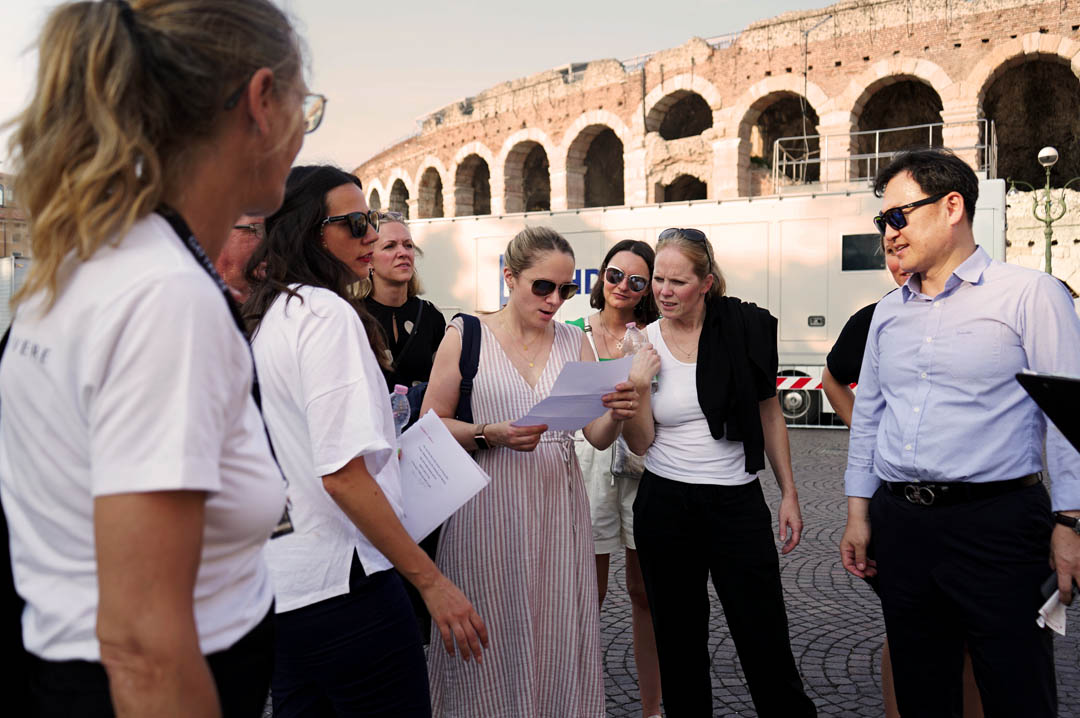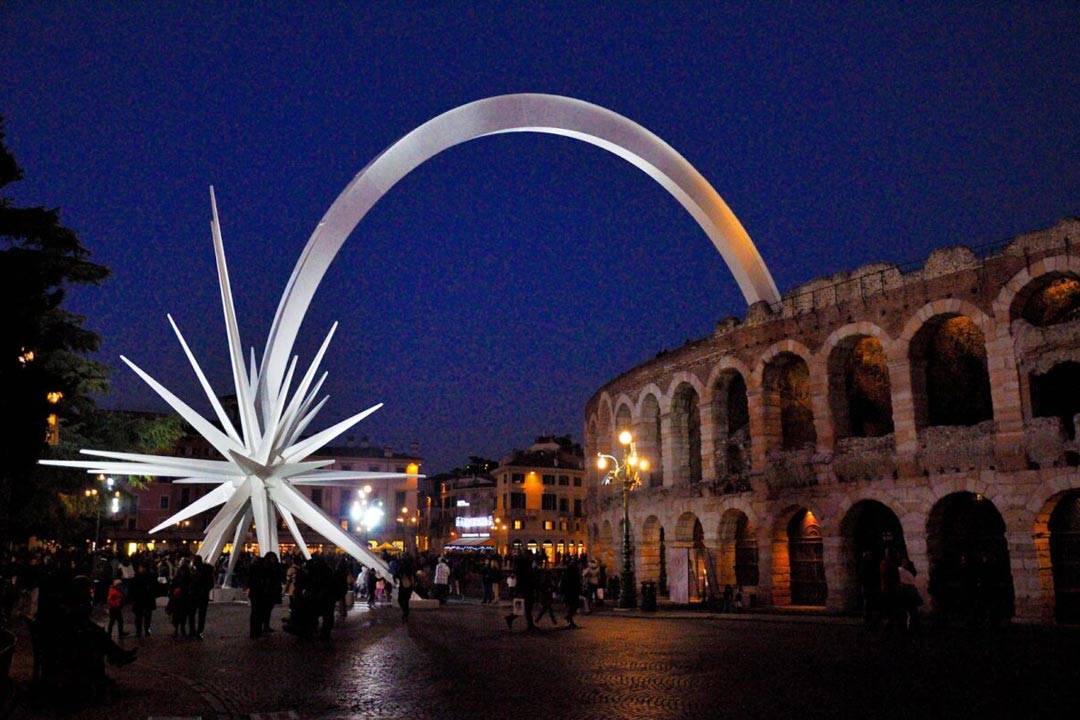The Scaliger Castle
The political instability of Verona during the middle ages has left its countryside and cities full of buildings to this turbulent time period. Castle formations can be witnessed throughout Italy, and they range in age from pre-Roman times to the gunpowder era.
In the 1260s Sirmione came into the possession of the influential della Scala (Scaliger) family from Verona. The della Scala family greatly contributed to the development of Verona and the cities to the north.
Lazise’s Scaliger Castle
It was around the end of 1,000 A.D. that the Castle and the city walls started to be built. There were four centuries of Venetian rule in Lazise, which became the most important town on the Verona side of the lake and the castle was used as a residence for the rulers of the Venetian Republic. During the occupation of the Habsburg family, the castle was sold to an individual for a pittance and served as a handy supplier of stones for those wanting to build a house. In the second half of the nineteenth century the castle was acquired by Count Giovanni Battista Buri, who restored it and created a beautiful park, in order to mix the charm of nature with his appreciation of the Middle Ages. The part of the fortress accessible by tourists is the one along the walls, both outside and inside, that have been perfectly preserved.
Soave Castle
Just few miles from Verona, there is a wonderful castle which was raised up on the top of a hill. This castle was called Castello di Soave, and it was named after the little village it controlled. The structure, consisting of three courtyards of different sizes, is a typical military building and can be reached either on foot following the path, a bit rough but suggestive, which starts from the central square, or by means of transport, arriving at the convenient private parking of the castle passing from the north slope of Monte Tenda.
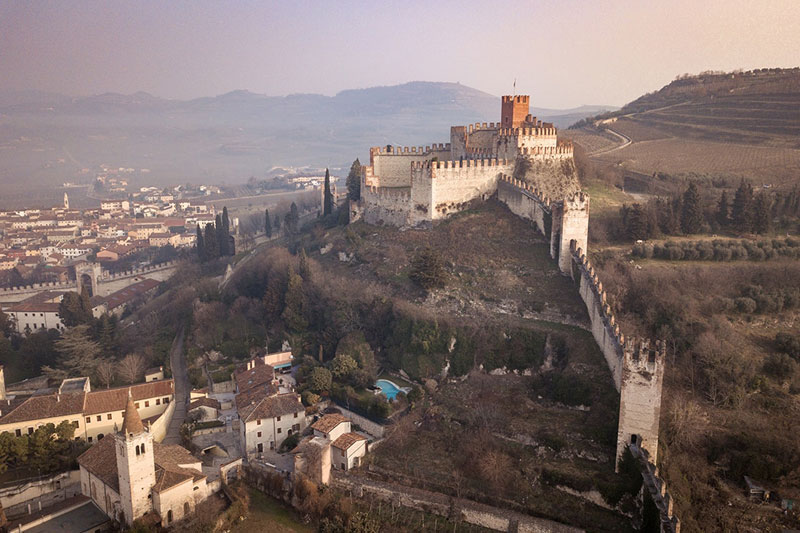
Villafranca Scaliger Castle
The first evidence of human life in Villafranca dates back to nearly 4000 years ago, and consists of the grave of a noble man. The castle was built more than 800 years ago and not everyone knows that Villafranca di Verona has been quoted by Shakespeare ii Romeo and Juliet. The unhappy story of the two unlucky lovers is set in the cities of Verona and Mantua, but also refers to an “old castle of Villafranca”.
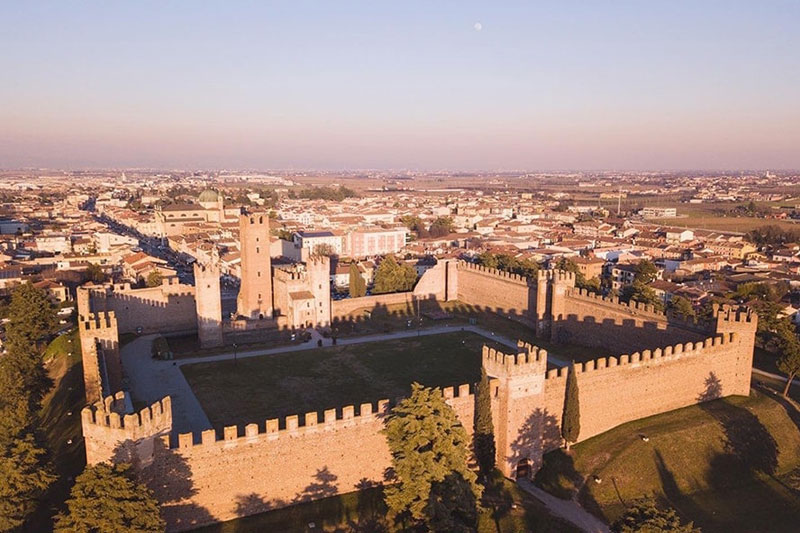
Monzambano Castle
The castle is an ancient fortress dating back to the XIII century situated in the center of Castellaro Lagusello, which preserves intact the original urbanistic plant, in addition to some medieval buildings and defensive works, including the four towers and the perimeter walls to defend the village. Built around the XIII century by the Scaligeri in Verona, was originally consisting of two distinct parts: the part north, with square tower and drawbridge to defense and the part to the south toward the lake as a residence. It was for many centuries contended for its strategic position on the border. In the half of the XV century the Republic of Venice seized of the village and kept it until the beginning of the seventeenth century when, lost its strategic function, the castle was sold to a noble family who became a part to your residence.
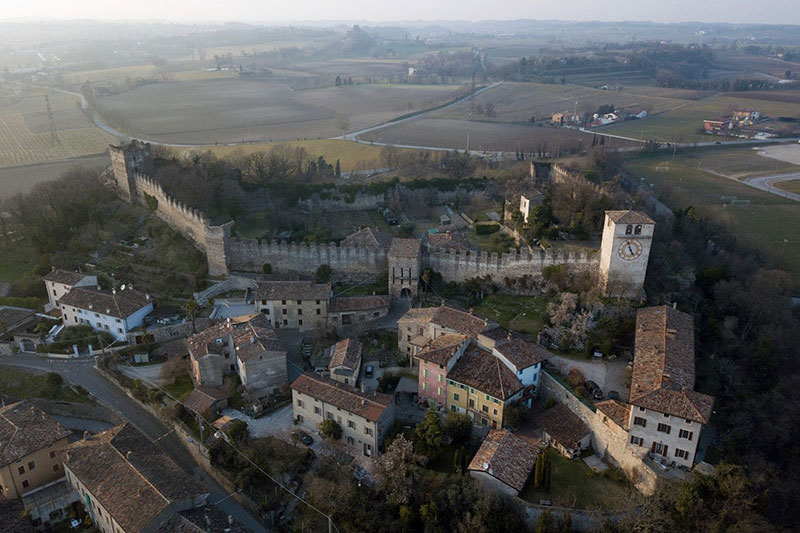
Malcesine Scaliger Castle
It is the symbol of the town, and was declared a national monument in 1902. It was built by the Lombards, and after many ups and downs, was rebuilt by the Scala family between the 11th and 12th century. Some of its points of interests are Mount Baldo and Garda’s Natural History Museum, the Sala delle Galee, or Galley Hall, and the former armoury, built by the Austrians and dedicated today to W. Goethe. This last hall holds the drawings the German intellectual made during his trip to Italy. And don’t miss the spectacular view from the balcony overlooking the lake (a 24 metres drop). Equally exceptional is the 70-metres-high keep, or Mastio, which towers above the lake.
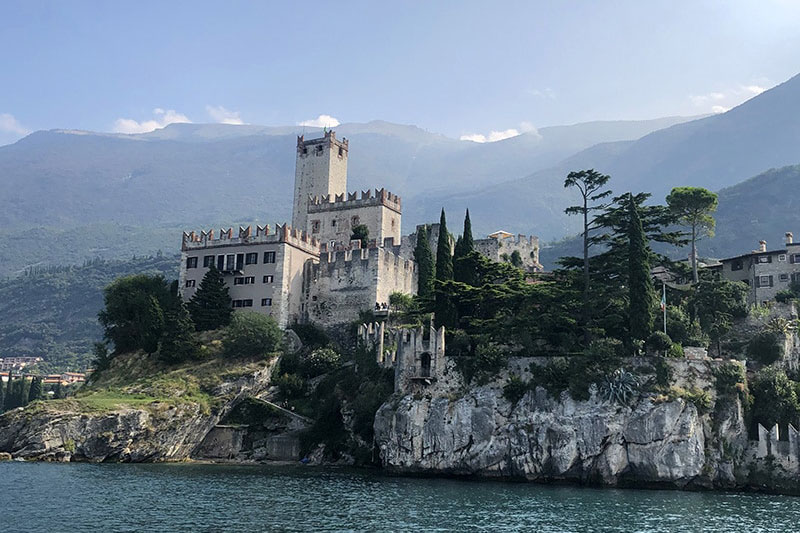
Torri del Benaco’s Scaliger Castle
Originally a defensive wall built by the Romans in the first century b.C, it was made into a proper castle in the 10th century by Berengar I of Italy. After that, it saw the domination of the Scala, the Visconti, and Venice, which is when its decadence began, with the destruction of the outside walls in 1760 to build the lemon orchard, still standing today. It hosts a museum with objects and artefacts of artisanal-industrial activities of Torri del Benaco’s past.
Castelnuovo del Garda’s Castle
Unlike the others, this castle was built by the Visconti, not the Scala. Having defeated the Scala, Giangaleazzo Visconti wanted to take control of Verona, so in 1387 he commenced the works for the Castelnuovo fortress, the Verona Citadel and the bridge in Borghetto di Valeggio sul Mincio (also known as Visconti bridge, where every year a spectacular banquet is held for the festival of the Nodo d’Amore, or love knot, celebrating the Tortellino di Valeggio). Two walls surrounded the castle. In the middle of the second one is the impressive Visconti Tower.
Valeggio sul Mincio Scaliger Castle
Open air cinema and shows during the fine season attract visitors from far and wide, but the truth is that this 14th century castle is attractive the whole year round. Of the three drawbridges that protected it, only one remains. The oldest part was nearly completely destroyed in the earthquake of 1117, which only spared the horse-shoe shaped Round Tower dating back to the 10th century.
